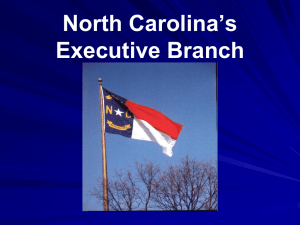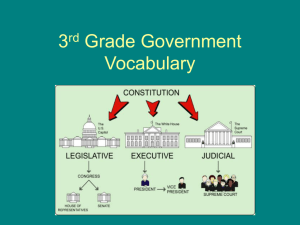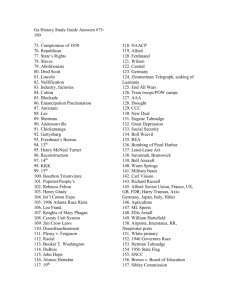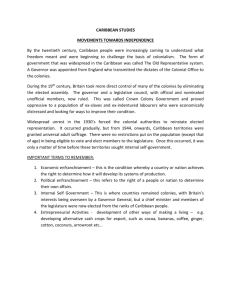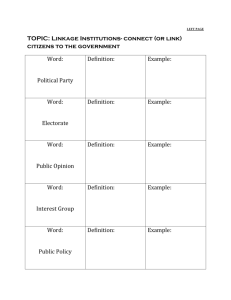History of New York State
advertisement
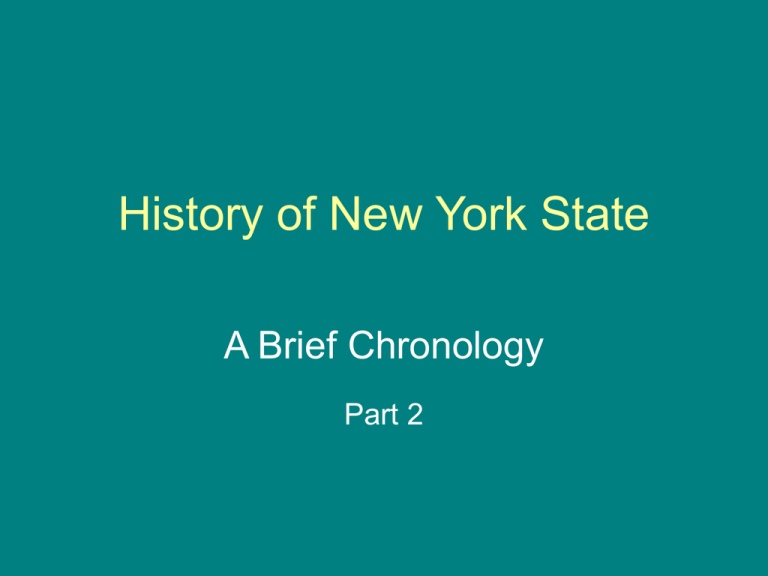
History of New York State A Brief Chronology Part 2 Source • Chronology & Documentary Handbook of the State of New York. • Ellen Lloyd Trover, State Editor • William F. Swindler, Series Editor • Oceana Publications • Dobbs Ferry, New York • 1978 1857-1863 • 1857 -- John A. King, 1st candidate of new Republican party, elected governor. • 1859 – Cooper Union, educational and cultural center for immigrant groups, opened. • 1860 – Population: 3,880,735. • 1861 – Matthew Vassar, NYC philanthropist, establishes women’s college at Poughkeepsie. • 1862 – New York sends 120 regiments to fight for the Unions during the Civil War. • 1863 – New York sends additional volunteers. 1863- 1867 • July 11, 1863 – Widespread draft riots lasting 3 days in NYC cause approximately 100 deaths and destroyed millions of dollars worth of property before federal troops bring order. • 1865 – Ezra Cornell, New York philanthropist, founded Cornell University in Ithaca. • 1866 – Constitutional convention held, no proposals resulted. • 1867 – Women’s suffrage movement results in speech before the state legislature by Elizabeth Cady Stanton. 1869 - 1873 • 1869 – John T. Hoffman, candidate of “Boss” William M. Tweed, elected governor. • 1870 – Population: 4,382,759 • 1870 – St. John’s University founded in Jamaica. • 1871 – Syracuse University established. • July 1871 – New York Times publishes news articles detailing the corruption of the political machine led by Boss Tweed in NYC. • 1873 – Republican John Dix elected governor in reaction to Tweed corruption scandal. 1874- 1884 • 1874 – First Chautauqua Assembly met at Lake Chautauqua. • 1879 – New State capitol in Albany dedicated. • 1880 – Population: 5,082,871 • 1881 – Chester A. Arthur, protégé of “Boss Roscoe Conkling, becomes president with the assassination of President James Garfield. • 1884 – New York governor Grover Cleveland becomes President. 1887-1894 • • • • 1887 – Pratt Institute founded in Brooklyn. 1889 – Barnard College founded in Mahattan. 1890 – Population: 6,003,174. 1892 – Roswell P. Flower of Watertown is elected governor as a Democrat. • 1894 – New York adopts 4th Constitution, initiating reforms in judicial and electoral systems and establishing more equitable classifications of urban-rural areas. 1898 - 1901 • January 1, 1898 – Greater New York City is officially created by legislative enactment following two-year study. • April 27, 1898 – Nassau County created. • 1899 – Theodore Roosevelt, a reform candidate Republican wins election as governor. • 1900 – Population: 7,268,894. • 1901 – Theodore Roosevelt, elected VicePresident in November 1900, becomes President when President McKinley is assassinated. 1905 - 1912 • 1905 – Juilliard School of Music established. • 1907 – Charles Evans Hughes, reform Republican candidate and trust buster, elected governor. • 1910 – Population: 9,113,614 • 1910 – Hughes appointed to the Supreme Court. • 1911 – John Alden Dix elected governor as a reform Democrat. • April 19, 1912 – Bronx, the final state county, is created as a borough of New York City. 1913- 1919 • October 17, 1913 – Governor William Sulzer, Democrat, is impeached for malpractices committed before is election as governor. • Lieutenant Governor Martin H. Glynn, a member of the Murphy machine , becomes governor. • 1915 – Republican district attorney Charles S. Whitman, becomes governor. • 1919 – Alfred E. Smith, New York Tammany candidate, elected governor for first time. 1919 - 1924 • 1919 – Mary M. Lilly & Ida B. Sammis become first women members elected to state legislature. • 1920 – Population: 10, 385, 227 • 1921 – Republican Nathan Miller elected governor in post WW 1 Harding landslide. • 1922 – Children’s Courts established. • 1922 – $20M allocated for highway construction. • 1923 – Al Smith elected governor for 2nd time. • 1924 – Fires destroy 15,000 acres in Catskills and Adirondack mountains. 1925 - 1931 • 1925 – Al Smith elected to 2nd consecutive term as governor, 3rd term overall. • 1927 – Al Smith elected to 4th two-year term. • September 12, 1927 – New York celebrates its 150th anniversary. • 1929 – Franklin D. Roosevelt becomes governor. • 1930 – Population: 12,588,066. • 1931 – 1 million cubic feet of rock collapses into Niagara River at American side of Niagara Falls 1932- 1938 • 1932 – Franklin D. Roosevelt elected President, Herbert H. Lehman elected governor. • 1935 – Lehman begins 2nd term as governor. • 1935 – New School of Social Research opens in New York City. • 1936 – President Roosevelt re-elected; Governor Lehman re-elected. • 1938 – State constitutional convention held, but no proposals, are made. 1939-1942 • 1939 – Governor Lehman begins 4th term, first term to be extended to four years by constitutional amendment in 1938. • April 30, 1939 – New York World’s Fair opens in Flushing Meadows. • 1940 – Population: 13,379,662. • July 2, 1941 – New York County grand jury returns indictments on extortion in milk industry. • January 4, 1942 – 500,000 volunteer to be part of civil defense program during WW2. 1942- 1948 • 1942 – Crusading prosecutor, Thomas E. Dewey, elected governor as Republican, 1st since 1923. • 1945 – Major labor strikes plague NYC in months following end of WW2. • April 13, 1947 – NYC donates 5 parcels of land for construction of United Nations. • 1947 – Dewey elected to 2nd term. • March 30, 1948 – More than 1,000 workers go on strike at New York Stock Exchange. 1948 - 1951 • April 27, 1948 – NYC announces $1Billion budget. • 1949 – Water shortage in Manhattan leads to water rationing. • 1950 – Population: 14,830,192. • March 21, 1950 – State officials authorize construction of $500 million New York Thruway. • 1951 – Federal and state investigators charge widespread racketeering in NYC, many resign. • 1951 – Thomas E. Dewey elected as governor to 3rd term. 1953 - 1955 • March 26, 1953 – NYC directed to turn over control of transit system to new transit authority. • 1954 – Special NYC census sets population at 8,050,000; including 485,000 Latino, 840,000 non-white. • September 21, 1955 – Loyalty investigations of 58,000 public employees results in 15 dismissals. • 1955 – Averell Harriman, Democrat, elected governor; 1st Democrat in 12 years. 1956 • August 3, 1956 – Congress authorizes NJ-NYConnecticut Interstate Sanitary Commission. • 1957 – Lincoln Square development project,$205M cultural, educational, and housing project launched with $27M in federal support. • 1959 – Republican Nelson A. Rockefeller elected governor. • 1959 – NYC Council creates commission to study feasibility of statehood for metro region. 1959 - 1963 • May 14, 1959 – Groundbreaking ceremonies for $75M Lincoln Center for the Performing Arts. • 1960 – Population: 16,596,507. • September 1, 1961 – Census reports indicates NYC second largest city in the world. • 1962 – Proceedings begin to test constitutionality of the states “Regents’ Prayer;” in 1965 it fails. • 1963 – Idylwild Airport renamed for slain president John F. Kennedy. 1964 - 1965 • January 18, 1964 – NY Port Authority announces plans for twin 110 story towers to be called the World Trade Center; to cost $350M. • April 22, 1964 – New York World’s Fair opens on the same site as the 1939 World’s Fair. • November 1964 – Robert Kennedy defeats incumbent Kenneth Keating for Senate seat. • November 9, 1965 – Massive power failure impacts 25M persons in US and Canada. It began in New York. 1966 - 1968 • September 21, 1966 – Protests over the quality of education for the poor in NYC led by Puerto Rican and African American activists. • November 8, 1966 – Constitutional amendment approved which allows state lottery. • 1967 – Proposed new constitution was rejected by the voters. • June 7, 1968 – RFK assassinated in Los Angeles. 1969 - 1971 • June 16, 1969 – U.S. Supreme Court upholds Rep. Adam Clayton Powell’s claim that the House of Representatives wrongly denied him the right to take his seat in Congress. • April 11, 1970 – Legislature passes liberal abortion law, permitting private decision by individuals within certain circumstances. • 1970 – Population: 18,190,740. • October 26, 1971 – U.S. Supreme Court upholds NY’s Taylor Law which docks striking teachers two days for every day they stay out on strike. 1972 - 1973 • January 24, 1972 – U.S. Supreme Court upholds ruling which voided 1-year residency law for receiving welfare. • July 7, 1972 – NY’s highest court upholds liberalized abortion laws. • July 19, 1972 – Three-day hunger strike by hundreds of inmates at Attica prison. • 1973 – State legislature passes no-fault insurance plan to take effect Feb. 1, 1974.
